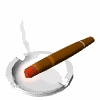Indo-European
The most well known of all language families is the Indo-European, which comprises roughly 12 major groups and hundreds of languages. The major groups or subfamilies are Celtic, Italic (including Romance), Baltic, Slavic, Germanic, Anatolian, Greek, Indic, Iranian, Tocharian, Albanian, and Armenian. In addition, it appears that Baltic and Slavic should form a larger Balto-Slavic group, and Indic and Iranian should be placed in an Indo-Iranian group.
Here's small list of words common to most Indo-European languages:
| Group | Language | | ||||||
| "father" | "mother" | "brother" | "two" | "three" | "four" | "horse" | ||
| Germanic | Old English | fæder | modor | broðor | twa | thrie | feowre | eoh |
| Italic | Latin | pater | mater | frater | duos | tres | quattuor | equus |
| Celtic | Old Irish | athair | mathair | brathir | do | tri | ceathair | ech |
| Hellenic | Greek | pater | meter | phrater 1 | duos | tri | tetra | hippos |
| Indic | Sanskrit | pitar | matar | bhratar | dva | trayas | chatvari | asva |
| Iranian | Avestan | pitar | matar | bratar | dwa | trayo | chatvaro | aspa |
| Slavic | Russian | otech | matka | brat | dva | tri | chetyre | loshaa (kon) |
| Armenian | Armenian | hayr | erku | erek' | cork' | |||
| Tocharian | Tocharian B | pacer | macer | procer | wi | trai | s'twer | yakwe |
| Proto-Indo-European | *pəter | *mater | *bhrater | *duwos | *treyes | *kwetores | *ek'wos | |
1. Greek phrater means "clan member"
Sino-Tibetan
Another large language family is the Sino-Tibetan, including Sinitic (all forms of Chinese) on one main branch and Tibeto-Burman (Tibetan, Burmese, and thousands of others) on the other main branch.
In the following example tones are omitted so that I have less work to do :) Also, note that I threw out Pinyin transliteration for Mandarin and used something of my own that also works for other dialects: /ś/ corresponds to voiceless palatal fricative (/x/ in Pinyin) much like /ch/ in German ich; /x/ is the voiceless velar fricative like /ch/ in Scottish loch; /ə/ is the central vowel schwa; /ʔ/ is the glottal stop; and /C/ means any stop consonant.
| Group | Language | | ||||||
| "I", "me" | "two" | "three" | "six" | "name" | "eye" | "blood" | ||
| Sinitic | Mandarin | wo | er | san | liu | ming | mu | śie |
| Sinitic | Yue | ngo | yi | saam | luk | ming | muk | hüt |
| Sinitic | Wu | ngu | liã | se | loʔ | ming | moʔ | śiʔ |
| Sinitic | Middle Chinese | nguo | ñi | sam | lyuk | myeng | muk | xwiet |
| Sinitic | Old Chinese | nguo | niys | səm | C-ruk | myeng | myək | swi:t |
| TB | Tibetan | nga | gñis | gsum | drug | ming | myak | yi (1) |
| TB | Burmese | nga | hnats | sum | khrok | ə-mañ | mig | swiyh |
| TB | Kachin | ngai | ñi | məsum | kruʔ | mying | myiʔ | sai |
| TB | Lepcha | ka | nyi | sam | ta-rak | ming | mik | vi |



Posting Komentar